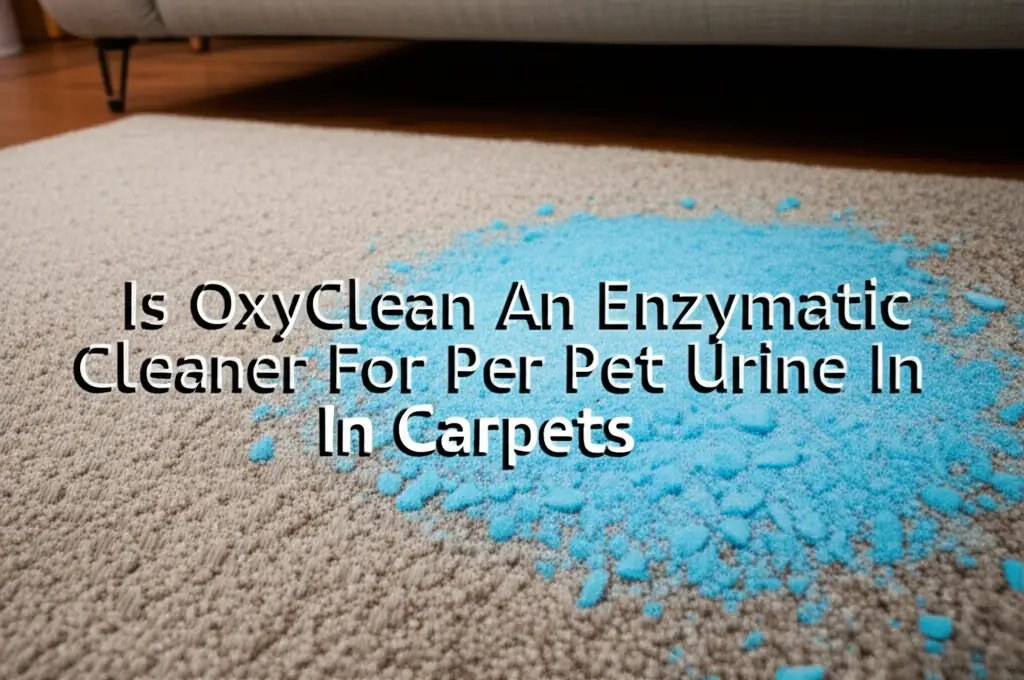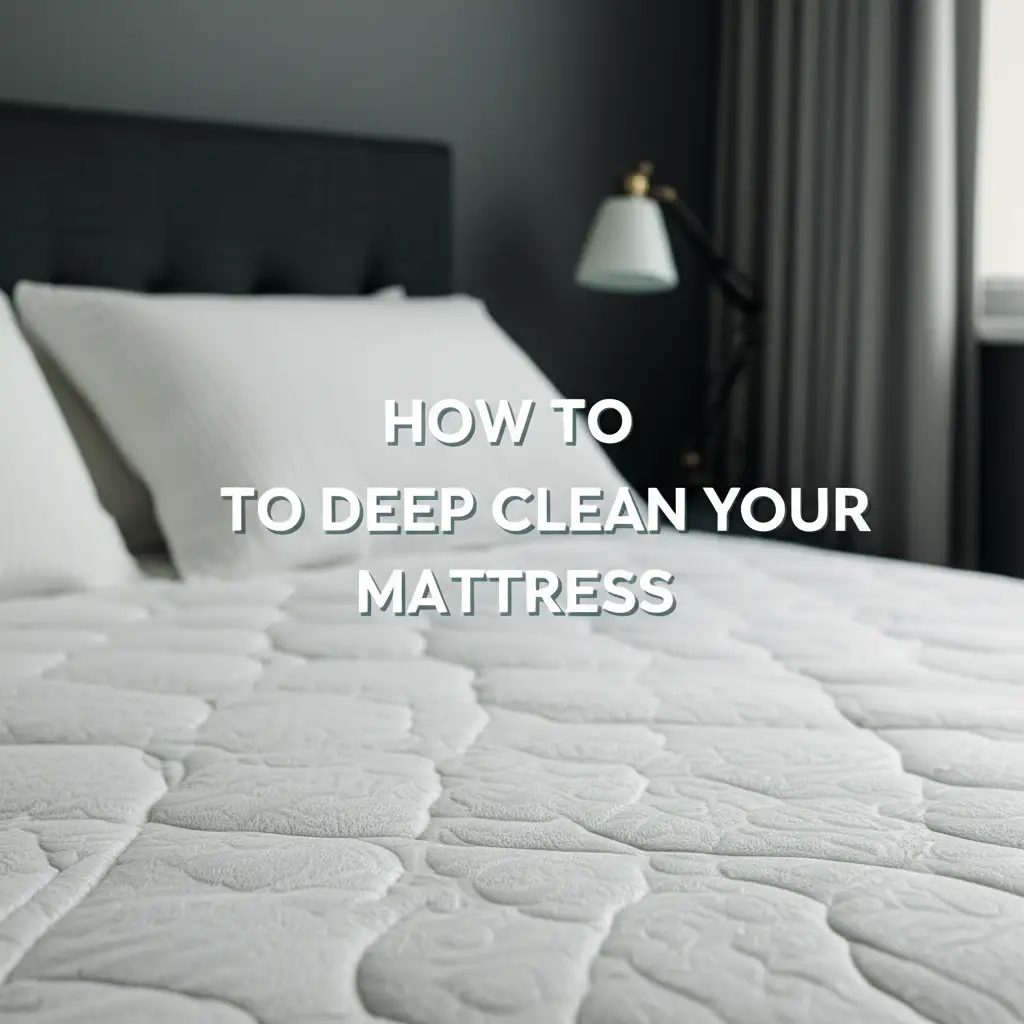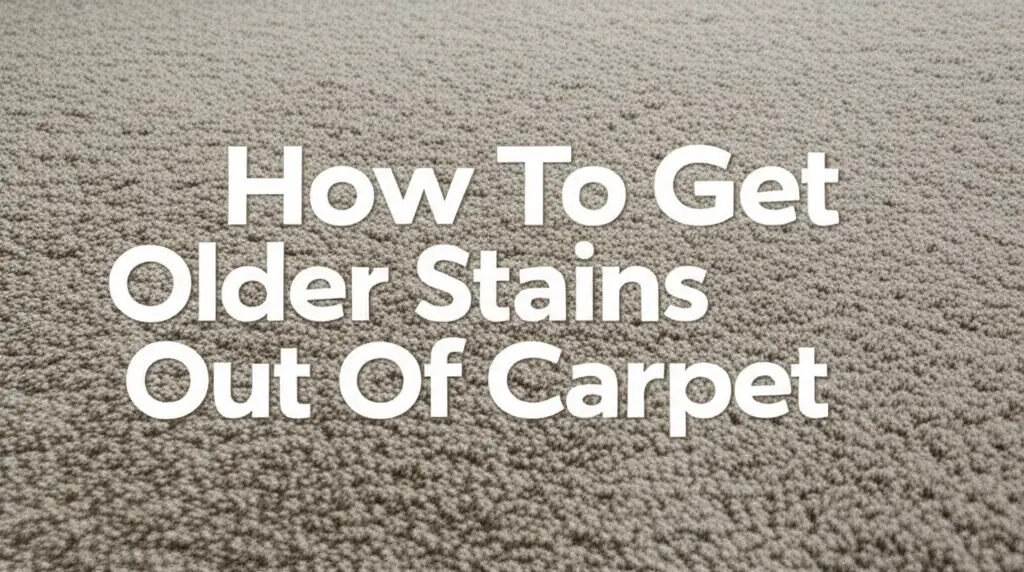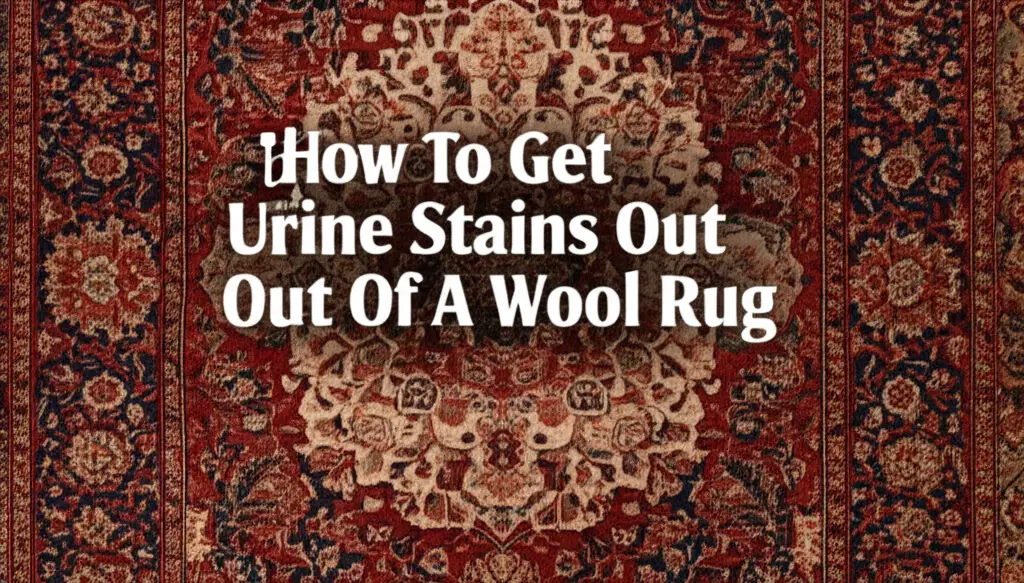· Mason Everett · Carpet Cleaning Solutions · 15 min read
Is Oxyclean An Enzymatic Cleaner For Pet Urine In Carpets

Is Oxyclean An Enzymatic Cleaner For Pet Urine In Carpets?
We love our pets, but pet accidents happen. A wet spot on the carpet quickly becomes a noticeable stain and a lingering odor. You might grab a popular product like Oxyclean, hoping for a quick fix. Many people wonder, “Is Oxyclean an enzymatic cleaner for pet urine in carpets?” This is a very common question.
Pet urine stains are tricky. They leave behind more than just a visible mark. They also create a strong, unpleasant smell. This odor comes from bacteria and uric acid crystals. Regular cleaners might clean the surface, but they often fail to remove the smell completely. This is why many people seek out enzymatic cleaners. These cleaners work differently. They target the organic matter in pet messes. In this article, we will explore how Oxyclean works. We will compare it to true enzymatic cleaners. You will learn the best methods for tackling pet urine effectively. My goal is to help you restore freshness to your home.
Takeaway
- Oxyclean is not an enzymatic cleaner. It uses oxygen to clean.
- Enzymatic cleaners break down organic matter with enzymes.
- Oxyclean removes visible stains and some odors through oxidation.
- Enzymatic cleaners target hidden organic residues and strong odors.
- Using both Oxyclean and an enzymatic cleaner offers the best results.
Clear, Concise Answer to the Main Query
No, Oxyclean is not an enzymatic cleaner for pet urine in carpets. Oxyclean works by releasing active oxygen, which creates a powerful oxidation process to break down and lift stains and odors. Enzymatic cleaners, however, use living enzymes to digest organic materials like urine proteins and uric acid crystals.
Understanding Enzymatic Cleaners for Pet Stains
You might hear a lot about enzymatic cleaners when dealing with pet accidents. I find these cleaners quite fascinating because of how they work. Enzymatic cleaners are special formulas. They contain non-pathogenic bacteria. These bacteria produce specific enzymes. These enzymes break down organic matter into simpler forms.
Imagine pet urine on your carpet. It contains proteins, fats, urea, and uric acid crystals. These components are what cause the stain and the bad smell. Regular cleaners might wash away the surface mess. However, they often leave behind the deeper, smell-causing elements. This is where enzymes become vital. The enzymes in these cleaners act as tiny biological scissors. They cut apart the complex molecules found in urine. They turn them into basic compounds like carbon dioxide and water.
This biological process is very important for complete odor elimination. When the enzymes break down the uric acid crystals, the source of the persistent “pee smell” goes away. This makes enzymatic cleaners especially effective for old, set-in stains where the urine has dried and crystallized. Without enzymes, these crystals stay in the carpet fibers. They release odor again when humidity increases. For effective removal, especially for cat urine, these cleaners are often recommended. You can learn more about specific techniques for dealing with tough pet stains by reading about how to remove cat urine from carpet. The goal is to not just clean but to neutralize the problem at its source.
Enzymatic cleaners need time to work. You apply them, and then you let them sit for a while. This allows the enzymes to do their job. The longer they work, the better they break down the organic material. This action helps to permanently remove odors. This is why professional carpet cleaners often use enzymatic solutions for pet-related issues. The lasting freshness is a clear sign of their effectiveness. I always recommend these for deep odor problems. Tackling the core issue is important for a truly clean home.
How Oxyclean Works: The Science of Oxidation
Let’s shift our focus to Oxyclean. Many of us have a tub of it under our sink. Oxyclean is a powerful cleaning agent. It is known for its ability to brighten clothes and remove tough stains. The core ingredient in Oxyclean is sodium percarbonate. This compound is a mix of hydrogen peroxide and sodium carbonate. When you mix Oxyclean with water, a chemical reaction happens.
Sodium percarbonate dissolves in water. It releases oxygen bubbles. This release of oxygen creates an oxidation process. This process is like a tiny scrubbing action. The oxygen bubbles lift dirt, grime, and stains from surfaces. They break down the chemical bonds of the stain-causing molecules. This action helps to lighten and remove the visible urine stain from your carpet. It also helps to neutralize some of the odor.
Oxyclean works on a chemical level. It does not use living enzymes or bacteria. It relies on the power of oxygen. This oxygen power is very effective for many types of stains. Think about food spills or dirt. For pet urine, Oxyclean can tackle the color and some of the immediate smell. The oxidation process breaks down the components that cause the color. It can also oxidize some odor-causing molecules.
However, its action is different from an enzyme cleaner. Oxyclean might remove the visible yellow stain. It may also reduce the initial urine smell. It does not break down the uric acid crystals in the same way enzymes do. Those crystals can remain in the carpet fibers. They can continue to cause a lingering odor over time. This is a key difference to remember. For general carpet cleaning or stain removal, knowing what to look for in a cleaner is important. You can find more information about what to look for in a carpet cleaner to make informed choices.
Oxyclean vs. Enzymatic Cleaners: Key Differences
Understanding the basic science helps us compare Oxyclean and enzymatic cleaners directly. I often explain this difference to friends. It is important to know which tool to use for specific cleaning tasks. The main difference lies in their active ingredients and how they achieve cleanliness.
Oxyclean relies on chemical oxidation. Its active component, sodium percarbonate, releases oxygen. This oxygen attacks stain molecules directly. It changes their chemical structure. This action lifts and breaks down visible stains. It also neutralizes certain odors. Think of it as a powerful bleaching action, though it is often considered color-safe. It brightens and cleans many surfaces. This chemical process is fast-acting for many fresh stains.
Enzymatic cleaners, on the other hand, use biological processes. They contain specialized enzymes or beneficial bacteria that produce these enzymes. These enzymes are catalysts. They speed up the breakdown of complex organic molecules. They target specific components found in pet urine. This includes proteins, fats, urea, and especially uric acid crystals. These are the main culprits behind lingering pet odors. Enzymatic cleaners work by digesting these organic materials. They transform them into simple, odorless compounds.
Here’s a simple breakdown of their roles:
- Oxyclean: Great for removing the visible stain and surface odors. It brightens and sanitizes through oxidation. It is effective for fresh spills and general stains.
- Enzymatic Cleaners: Essential for deeply embedded odors and invisible residues. They break down the actual source of the smell, like uric acid crystals. They are crucial for pet accidents.
You might wonder, “Can I use Oxyclean on my wool rug?” Wool is a natural fiber. Its dyes can react differently to oxygen bleach. For natural fibers, specific care is vital. For guidance on handling delicate materials, see our article on how to get urine stains out of a wool rug. This difference in action means they excel at different aspects of pet urine cleanup. Oxyclean tackles the immediate stain. Enzyme cleaners handle the long-term odor issue. For the best result, you might use both.
Effective Strategies for Pet Urine in Carpets
Dealing with pet urine on carpets requires a multi-step approach. You cannot just clean the surface. You must tackle the stain and the deep-set odor. I always tell people to act fast. Speed makes a big difference in preventing permanent damage.
First, immediate action is key. As soon as you notice the accident, blot up as much urine as possible. Do not rub the stain. Rubbing pushes the urine deeper into the carpet fibers and padding. Use clean, dry paper towels or an old rag. Press down firmly to absorb the liquid. Repeat this process until the area is nearly dry. Standing on the towels can help apply more pressure.
Next, you can pre-treat the area. Oxyclean can be a good choice for this step. Mix Oxyclean powder with water according to package directions. Make a paste or a solution. Apply it directly to the blotted area. Let it sit for a specific time, usually 5-10 minutes. This allows the oxygen to lift and break down the visible stain. It also helps to neutralize some of the initial odor. After the time passes, blot the area again. Remove as much of the Oxyclean solution as possible. Rinse the area lightly with clean water. Blot again.
After treating with Oxyclean, I strongly recommend following up with an enzymatic cleaner. This is critical for odor removal. Saturate the area with the enzymatic cleaner. Be generous. The cleaner needs to reach all the urine, even what soaked into the padding. Allow the enzymatic cleaner to sit for several hours, or even overnight, as directed on its label. This gives the enzymes enough time to digest the uric acid crystals and other organic matter. Covering the area with plastic wrap can help keep the cleaner moist. This prevents it from drying too quickly.
Finally, let the area air dry completely. You can use a fan to speed up drying. Once dry, vacuum the area. If any odor remains, repeat the enzymatic treatment. Sometimes, old or large stains need multiple applications. Remember, removing cat urine from carpets specifically can be challenging due to its concentrated nature. For stubborn cat urine issues, consider our detailed guide on how to remove cat urine from carpet. The combination of immediate blotting, Oxyclean for the visual stain, and an enzymatic cleaner for deep odor is often the most effective strategy.
Safety and Considerations When Using Oxyclean on Carpets
Using any cleaning product on your carpet needs careful thought. This is true for Oxyclean too. While Oxyclean is generally safe for many surfaces, carpets can be sensitive. Always perform a patch test first. This is a crucial step I never skip. Find an inconspicuous area of your carpet. Apply a small amount of the mixed Oxyclean solution there. Wait for about 10-15 minutes. Then, blot it dry. Check for any discoloration or damage. If the color holds, you are likely safe to proceed.
Carpet materials vary greatly. Synthetic fibers like nylon and polyester usually tolerate Oxyclean well. They are durable and colorfast. Natural fibers, such as wool or silk, are more delicate. Oxyclean contains an oxygen-based bleaching agent. This agent can potentially lighten or damage natural fibers. It might also strip away natural oils in wool. This can leave the carpet feeling brittle. For specific advice on different carpet types, including those made for pets, you can explore resources like what is pet carpet. Understanding your carpet’s material is essential before cleaning.
Ventilation is also important when using Oxyclean. The product releases oxygen, but it can also release mild fumes. Open windows or use fans to ensure good airflow in the room. This protects your respiratory system. It also helps the carpet dry faster. Avoid direct contact with your skin and eyes. Wear gloves if you have sensitive skin. Always follow the manufacturer’s instructions on the Oxyclean packaging. Using too much product or letting it sit for too long can sometimes leave a residue. This residue can attract dirt later.
If you are using a carpet cleaning machine, do not put Oxyclean directly into the machine. Oxyclean is a laundry booster. It is not formulated for carpet machines. You can pre-treat the area with a dissolved Oxyclean solution. Then, you can use your carpet cleaner with a carpet-specific shampoo. For tips on using cleaning equipment effectively, you might find our guide on can you clean carpets with a steam cleaner helpful. Always rinse the carpet thoroughly after using any cleaning solution. This ensures no residue is left behind. Proper rinsing extends the life of your carpet. It also prevents dirt from reappearing too quickly.
Beyond Stains: Eliminating Lingering Pet Odors
Removing the visible stain is only half the battle. The lingering pet odor often poses a bigger challenge. I have encountered countless carpets that look clean but still smell strongly of urine. This happens because the source of the odor is often invisible. It lies deep within the carpet fibers and the padding beneath.
Pet urine, especially dried urine, creates uric acid crystals. These crystals are incredibly stubborn. They are not easily dissolved by water or common detergents. When humidity rises, these crystals reactivate. They release the strong, unmistakable “ammonia” smell. This is why you might clean a spot, but the smell returns later. Regular cleaners often fail to break down these crystals. This leaves the odor source intact.
This is where the unique power of enzymatic cleaners shines brightest. Enzymatic cleaners contain specific enzymes that break down these uric acid crystals. They essentially digest the odor-causing molecules. This process eliminates the source of the smell. It does not just mask it. For any significant pet urine accident, I consider an enzymatic cleaner an absolute necessity. It goes beyond the surface. It tackles the embedded problem. You can explore more about tackling persistent smells by reading our article on how to remove pet pee smell from carpet. This resource provides detailed steps for odor elimination.
After treating with an enzymatic cleaner, thorough drying is critical. Moisture can encourage bacterial growth. This could lead to new odors. Use fans or open windows to ensure good air circulation. You might also consider using a wet-dry vacuum to extract as much liquid as possible. Sometimes, for very old or deeply soaked areas, the padding itself might be saturated. In severe cases, professional carpet cleaning services may be needed. They have powerful extraction tools. They also use specialized enzymatic solutions. These tools can reach deep into the carpet and its padding. They ensure complete removal of contaminants.
Finally, consider the air quality in your home. Even after cleaning, some residual odor particles can linger in the air. Air purifiers with activated carbon filters can help absorb these airborne odors. Remember, a fresh-smelling home starts with eliminating the root cause of odors. For really tough spots, especially those on specific materials, you might also find value in knowing how to get urine stains out of a wool rug. This dual approach of surface cleaning and deep odor elimination creates a truly clean and inviting environment.
Frequently Asked Questions
Is Oxyclean safe for all carpet types?
Oxyclean is generally safe for most synthetic carpets like nylon and polyester. However, it can potentially damage or discolor natural fibers like wool or silk. Always perform a small patch test in an hidden area first. This checks for colorfastness before full application.
Can I mix Oxyclean with an enzymatic cleaner?
No, you should not mix Oxyclean with an enzymatic cleaner. The oxygen released by Oxyclean can deactivate the delicate enzymes in enzymatic cleaners. This renders the enzymatic cleaner ineffective. Use Oxyclean first for stains, then rinse thoroughly. After that, apply the enzymatic cleaner.
How long does it take for Oxyclean to work on pet urine?
Oxyclean typically needs 5 to 10 minutes to work on fresh pet urine stains. For tougher or older stains, you might let it sit for up to 30 minutes. Always follow the product’s specific instructions. Prompt action and thorough blotting improve results significantly.
Does Oxyclean remove the pet urine smell completely?
Oxyclean can help neutralize some of the initial pet urine smell through oxidation. However, it does not fully break down the uric acid crystals responsible for lingering odors. For complete odor elimination, you will need to follow up with a dedicated enzymatic cleaner after using Oxyclean.
When should I use an enzymatic cleaner instead of Oxyclean?
You should always use an enzymatic cleaner when dealing with pet urine odors, especially for dried stains or recurring smells. Enzymatic cleaners are designed to digest the organic components, including uric acid crystals, that cause deep, persistent odors. Oxyclean is better for visible stains and general cleaning.
What if the stain is old and set?
For old and set-in stains, a two-step approach works best. First, use Oxyclean or another oxygen cleaner to tackle the visible discoloration. Then, thoroughly apply a strong enzymatic cleaner. Allow it to soak deeply for an extended period, perhaps overnight. This gives the enzymes time to break down the embedded odor sources. Multiple applications may be necessary for very stubborn old stains.
Conclusion
Tackling pet urine in carpets can feel like a never-ending battle. Many people ask, “Is Oxyclean an enzymatic cleaner for pet urine in carpets?” As we’ve explored, Oxyclean is not an enzymatic cleaner. It uses the power of oxygen for stain removal and some odor neutralization. This makes it a valuable tool for visible pet messes. However, it does not break down the microscopic uric acid crystals that cause persistent, deep-seated odors.
For truly clean carpets and a fresh home, a combined strategy is your best bet. Start with Oxyclean or a similar oxygen-based cleaner to effectively lift surface stains and lighten discoloration. Always perform a patch test first to ensure carpet safety. After this initial treatment, follow up with a high-quality enzymatic cleaner. This critical step ensures that the hidden organic residues and stubborn uric acid crystals are fully digested. It leads to complete odor elimination.
By understanding how each type of cleaner works, you gain the power to choose the right tool for the job. You can confidently remove both the visible stain and the underlying smell. A clean carpet means a happier home for everyone, pets included. Take these steps to enjoy a fresh, inviting living space once more. Your nose, and your family, will thank you.





